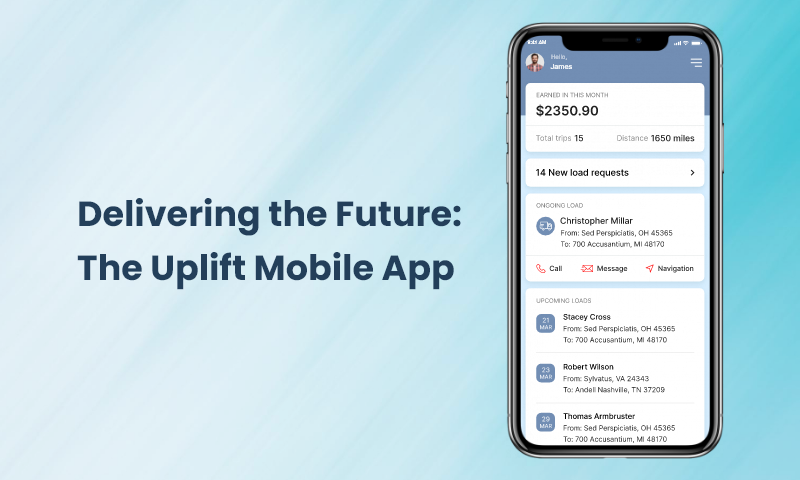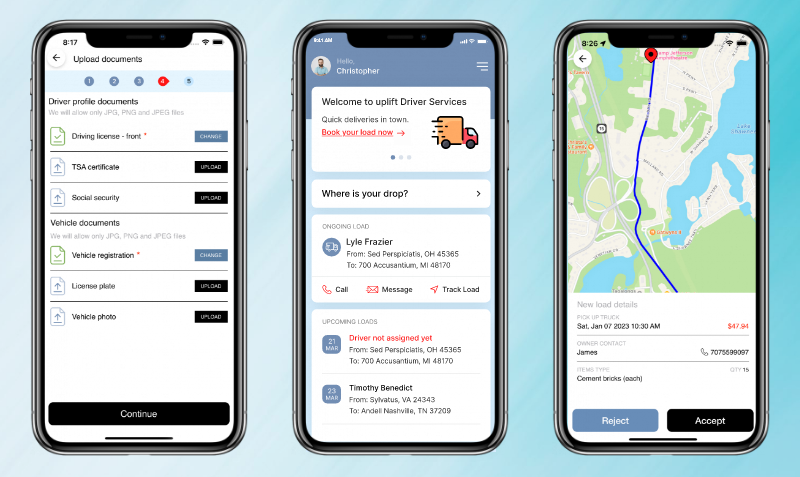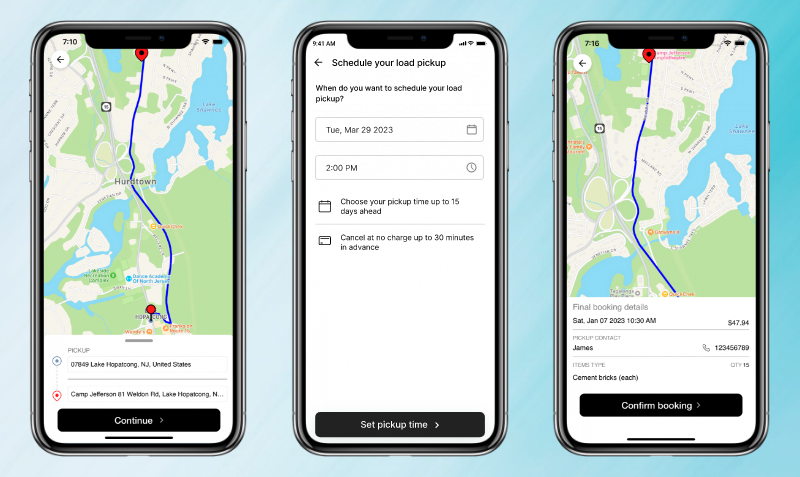
Overview:
Uplift is an on-demand delivery app solution for connecting customers and drivers. Uplift aims to make it easier for customers to get the things they need to be delivered. The app allows users to request a local driver in minutes and have items like furniture, TVs, appliances, and building materials picked up from any location and dropped off at another. And at the same time, it allows drivers to take jobs on the go. It’s easy, quick, and reliable; plus, Apple Pay ensures that payment is safe and secure.
In today’s fast-paced world, people are always looking for ways to save time, and the Uplift app provides just that. The client wanted to develop the app to offer a fast and secure delivery service to customers. The idea was to create an app that could help customers request a local driver to pick up any item and drop it off at any location within the 5-mile area. This saves customers time and effort in transporting items themselves.
Furthermore, the app also offers an opportunity for drivers to earn money by accepting loads nearby and delivering them to their destination. This creates a new job opportunity for drivers and helps the local community by providing a fast and reliable delivery service.
All in all, Uplift was conceived to help people with convenient service and new job opportunities that benefit the local community. The client contacted Custom Software Lab to design a bespoke app that turns their idea into a reality.
Solution:
Our iPhone app development service team was excited to take on the challenge and bring the idea to life with a robust app. We began by carrying out an extensive Discovery phase, which helped us develop clear KPIs and determine the most important components of the UI related to their target users – customers and drivers.
After we established the overall look, feel, and color scheme of the site (blue for confidence, blue-grey and white for text), it was time to create a UX strategy that would allow us to achieve our objectives: design a rapid and secure delivery service, complete with an easy-to-use app for customers to book loadings and search for nearby drivers. To do so, we designed several wireframe prototypes to aid in testing out potential flows. Here are some of the features we added to the app:
Google Firebase real-time database: We opted to use Google Firebase real-time database due to its quick and optimized performance. This platform offers real-time synchronization, ensuring data is always current and interacting faster than typical APIs. Utilizing this technology allows us to deliver a responsive, high-performing application.
Apple Pay: We created a secure and user-friendly payment system in the Uplift app by adopting Apple Pay for one-click payments. The one-click payment feature means customers can easily authenticate their purchase with just a single touch, either via Touch ID or Face ID, allowing for instant payment – increasing convenience and security. This easy and secure payment option reinforced trust in the Uplift brand.
Apple Maps: We implemented Apple Maps routing to help drivers find the best route to pickups and destinations. It provided turn-by-turn directions and real-time traffic updates, allowing drivers to easily navigate even the most complex road networks while avoiding congestion.
This feature also provided customers with greater transparency, making it easier to stay up-to-date on their delivery status.
Apple push notifications: Apple push notifications keep both drivers and customers informed in real time. Drivers are notified of a new job’s details and location when it becomes available nearby; similarly, customers get the driver’s name and the estimated time of arrival when the job is accepted. Customers can even track the delivery’s progress with real-time updates on their devices.
This feature ensures that neither party misses out on any information throughout the process, helping to reduce the chances of missed deliveries. Additionally, it allows drivers to optimize their routes, resulting in faster delivery times.
Proof of Delivery (POD): This feature requires drivers to take a photo of the delivered item and capture the recipient’s signature upon delivery. The data from this process is then uploaded to our database, creating a record to resolve disputes between drivers and customers.
Through this POD feature, we are able to provide our customers with greater peace of mind and confidence in the delivery process. It provides hard evidence of what was delivered, increasing customer satisfaction and trust in Uplift’s services. It has improved accountability and security within the delivery process for enhanced customer satisfaction.
Call and Text: Uplift’s mobile app employs a call and text feature to facilitate better communication between drivers and customers during an emergency. With this feature enabled, drivers and customers can quickly resolve any issues they might encounter, such as having difficulty locating the pickup location. Additionally, through this direct communication channel, the app’s customer service is enhanced, boosting trust and confidence in Uplift.
Result:
Uplift mobile app’s performance exceeded expectations, resulting in a high number of downloads and a substantial increase in business. Customers especially lauded the app for its convenience and security: its user-friendly interface enabled customers to book loads quickly, and the one-click payment service with Apple Pay provided a secure experience. Moreover, real-time notifications improved communication between drivers and customers, eliminating potential issues along the way. All these factors were instrumental in boosting customer satisfaction and attracting new users. Uplift is an example of how offering a convenient and secure platform can lead to tangible results.
Are you looking for help in turning your ideas into an actual app? At Customer Software Lab, we specialize in creating apps that meet our customers’ needs and expectations. Get in touch today to hire our iPhone app development Services.


